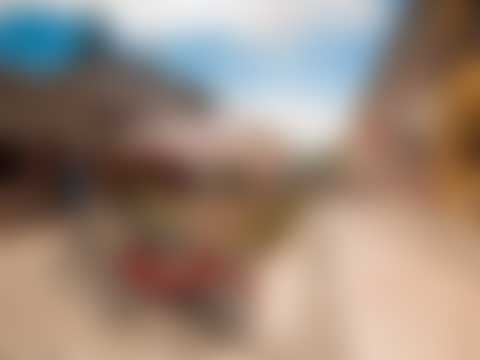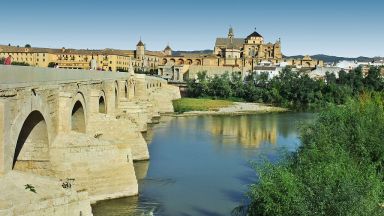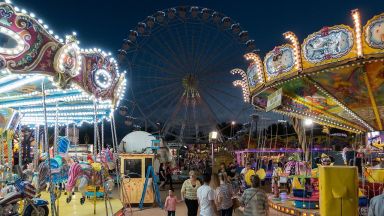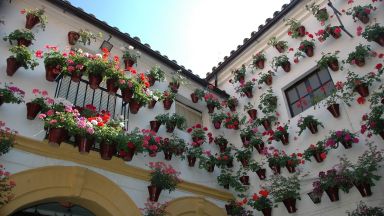Capilla de San Bartolomé
Church in Córdoba
The Capilla de San Bartolomé or Saint Bartholomew Chapel is a funerary chapel in the historic center of Córdoba, Andalusia in Spain. It is dated between 1390 and 1410. Richly decorated, it is one of the city’s best examples of Mudéjar art and has a rectangular floor plan divided into a chapel and atrium, richly adorned with tiles and plaster work. It is located in the heart of the old Jewish quarter known as La Judería, inside the premises of the Humanities Faculty, in a building which between the 17th and 20th centuries was the Cardenal Salazar Hospital.
Short History of Capilla de San Bartolomé
Located on the Calle Averroes in today’s Faculty of Arts building, the relatively unknown chapel is one of the city’s most notable monuments.
Due to the the assault on the Jewish quarter of Malburguet in the year 1391 and the subsequent and the later expulsion of the Jews from La Judería, or their forced conversion to Christianity, the Christian quarter of San Bartolomé was created, which in 1399 came to grow with the new Alcázar Viejo or San Basilio neighborhood.
The church of the San Bartolomé was constructed between 1399 and 1410 and during the first half of the 15th century, a funerary chapel was added.
The little building continued to operate as a parish church until the 17th century, possibly awaiting completion of a larger church. Restored in 1953 and 2006, the chapel is a fine example of ancient Mudéjar art.
What can you see in the Capilla de San Bartolomé?
Rectangular in shape, the area is divided into two sections, one for the chapel itself, the other for a courtyard.
Chapel
Built of rusticated sandstone, the chapel has a rectangular floor measuring 9 m by 5 m. The chancel is slightly higher than the remainder of the building. There are two doors, one through a porch opening into a courtyard on Calle Averroes, the second, strangely locked from the outside, providing access into a side chapel which may have been connected to a sacristy in another building.
It conserves in its interior the original flooring of the 15th century, with glazed bricks and olambrillas, and prominent socles of geometric tiling.
The plasterworks that are displayed by the walls show a rich repertoire of the best Mudejar, consisting of lacería, the coat of arms of the Order of the Band, instituted by Alfonso XI, with which the king rewarded the most faithful nobles, the delicate ataurique, and the inscriptions that, in Kufic and nasjí, repeat praises to Allah, empty of religious content and endowed only with ornamental sense.
An extraordinary collection of thirty-five Nasrid tiles were found during the 1935 restoration on the riser of the step, which precedes the altar. They represent interesting scenes interpreted as allegories of the senses and have moved to the Museo Arqueológico y Etnológico de Córdoba.
Courtyard
The entrance from the courtyard has a pointed arch with a few simple decorations while the other entrance, also pointed, has zigzag or sawtooth decorations. Two small columns bearing Islamic decorations with scrolls and leaves support the elegantly rib-vaulted ceiling. The interior walls are richly decorated with yeseria plasterwork and tiling while the floor is also decorated with alternating tiles. The wall decorations combine depictions of plants, geometric patterns and heraldry. The coats of arms belong to the Knights of the Band, an order created by King Alfonso XI. Inscriptions are in both Kufic and Naskh scripts.
What is Mudejar art?
Mudejar comes from “mudayyan” or the one who has been allowed to stay, referring to the Moors who remained in Spain after the Christians had recaptured the Iberian peninsula, preserving his religion, language and customs. Mudejar art is a new artistic expression that combines characteristics of the Hispanic-Muslim and other contemporary styles. It is the result of the coexistence of the three cultures that constituted the society of medieval Spain: the Christian, the Muslim and the Jewish.
The Capilla de San Bartolomé appears in our Complete Guide to Visiting Córdoba!
This website uses affiliate links which may earn a commission at no additional cost to you!
Visiting Capilla de San Bartolomé
From September 15th to June 14th: From 10:30 am. to 1:30 pm. and from 3:30 pm. to 6:30 pm. From June 15th to September 14th: From 10 am. to 2 pm. Closed on Mondays (mornings) and Sundays (afternoons)
From Monday to Friday: 1,50 € Saturday and holidays: 2 €
Nearby Attractions
- Plaza Maimónides (0.0) km
Square and Statue in Córdoba - El Zoco (0.0) km
Market in Córdoba - Museo Taurino de Córdoba (0.0) km
Museum in Córdoba - Maimonides Statue (0.0) km
Statue in Córdoba - Hospital del Cardenal Salazar (0.1) km
Historic Building in Córdoba - Sinagoga de Córdoba (0.1) km
Synagogue in Córdoba - Casa de Sefarad (0.1) km
Museum in Córdoba - Judería de Córdoba (0.1) km
Area in Córdoba - Casa Andalusí (0.1) km
Historic Building and Museum in Córdoba - Almodóvar Gate (0.2) km
City Gate in Córdoba



